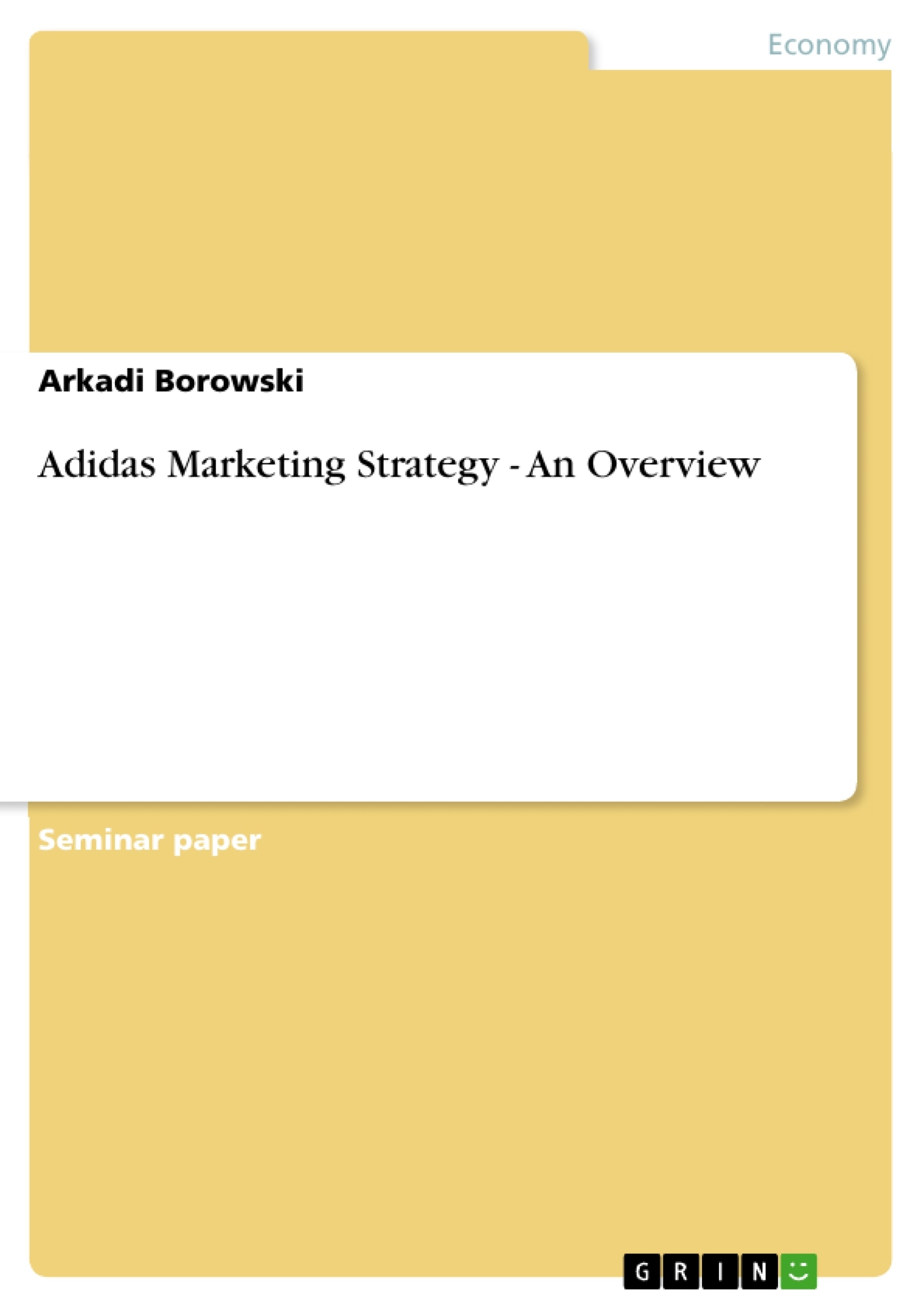The Adidas group, headquartered in Herzogenaurach (Germany) was built on 18th August 1920 by Adolf Dassler. The brand and its products celebrated their first worldwide success in 1954 after the German have won the soccer world championship. After some commercial disappointments in the middle 80´s, the family enterprise had to open up for investors. In 1995 followed the initial public offering on Frankfurt´s exchange market. To stay competitive to Nike on the US-market, the company had taken over Reebok in 2006.
Furthermore, the company has worldwide 169 subsidiaries and had total revenue of 11.990 Mio. Euros in 2010. The company uses the image of its brand and the available amount of capital to sponsor many sports events such as soccer championships, Olympic Games or Paralympics and many more. In 2012 Adidas will be the official sportswear-partner of the Olympic Games and the Paralympics in London. Additionally Adidas´ high-qualified experts and its international network of suppliers make the company a competitive manufacturer of sporting goods.
Table of Contents
- Executive Summary
- Introduction
- SWOT-analysis
- PESTLE-analysis
- Unique selling proposition
- Recommendation
- Segmentation, Targeting & Positioning
- Marketing objectives & goals (SMART)
- Marketing strategies and goals (4 Ps)
- Conclusion
- References
Objectives and Key Themes
The objective of this report is to analyze Adidas' marketing strategies and evaluate its performance relative to competitors. The report examines Adidas' current market position using SWOT, PESTLE, and USP analyses. It then proposes marketing strategies using STP, SMART, and 4P frameworks.
- Adidas' competitive position in the sporting goods market
- Analysis of Adidas' internal strengths and weaknesses
- Assessment of external opportunities and threats facing Adidas
- Development of effective marketing strategies for Adidas
- Evaluation of Adidas' marketing performance
Chapter Summaries
Executive Summary: This section provides a brief overview of Adidas, its history, and its current market position. It highlights the company's success, its acquisition of Reebok, and its significant revenue. The summary emphasizes Adidas' use of brand image and capital to sponsor major sporting events, contributing to its global presence and competitiveness.
Introduction: This chapter introduces Adidas as a leading manufacturer of sporting goods and outlines the report's structure. It details the analysis of Adidas' current situation using SWOT, PESTLE, and USP analyses, followed by an examination of proposed strategies using contemporary marketing methods such as STP, SMART, and 4Ps.
SWOT-analysis: This chapter presents a comprehensive SWOT (Strengths, Weaknesses, Opportunities, Threats) analysis of Adidas. Strengths include its financial stability, brand recognition, global presence, extensive supply chain, and high-skilled workforce enabling 24/7 operations. Weaknesses include challenges with Reebok's performance and difficulties in maintaining consistent product quality due to manufacturing in low-wage countries. Opportunities exist in leveraging technological advancements like "miCoach" and incorporating electronic tools into its products. Threats are implicitly addressed through the analysis of weaknesses and opportunities. The chapter emphasizes the interplay between internal factors (strengths and weaknesses) and external factors (opportunities and threats) in shaping Adidas' strategic decisions.
Keywords
Adidas, marketing strategy, SWOT analysis, PESTLE analysis, USP, Segmentation, Targeting, Positioning (STP), SMART goals, 4Ps, Reebok, competitive advantage, brand image, global market, supply chain, sporting goods, marketing performance.
Adidas Marketing Strategy Report: Frequently Asked Questions
What is the purpose of this report?
This report analyzes Adidas' marketing strategies and evaluates its performance relative to competitors. It examines Adidas' current market position using SWOT, PESTLE, and USP analyses and proposes marketing strategies using STP, SMART, and 4P frameworks.
What key themes are covered in this report?
The report covers Adidas' competitive position, its internal strengths and weaknesses, external opportunities and threats, the development of effective marketing strategies, and an evaluation of Adidas' marketing performance.
What analytical frameworks are used in the report?
The report utilizes several key frameworks, including SWOT analysis (Strengths, Weaknesses, Opportunities, Threats), PESTLE analysis (Political, Economic, Social, Technological, Legal, Environmental), USP (Unique Selling Proposition), STP (Segmentation, Targeting, Positioning), SMART goals (Specific, Measurable, Achievable, Relevant, Time-bound), and the 4Ps of marketing (Product, Price, Place, Promotion).
What are some of Adidas' strengths and weaknesses highlighted in the report?
Strengths include financial stability, brand recognition, global presence, an extensive supply chain, and a highly skilled workforce. Weaknesses include challenges with Reebok's performance and difficulties maintaining consistent product quality due to manufacturing in low-wage countries.
What opportunities and threats are identified for Adidas?
Opportunities exist in leveraging technological advancements like "miCoach" and incorporating electronic tools into its products. Threats are implicitly addressed through the analysis of weaknesses and opportunities, highlighting the interplay between internal and external factors.
What is the structure of the report?
The report includes an Executive Summary, Introduction (with SWOT, PESTLE, and USP analyses), a Recommendation section (with STP, SMART, and 4P frameworks), a Conclusion, and References.
What are the key strategies proposed for Adidas?
The report proposes marketing strategies based on Segmentation, Targeting, and Positioning (STP), setting SMART goals, and utilizing the 4Ps of marketing (Product, Price, Place, Promotion).
What is the overall conclusion of the report?
The conclusion of the report is not explicitly detailed in the provided summary. A full reading of the report would be necessary to understand the final conclusions.
What keywords are associated with this report?
Adidas, marketing strategy, SWOT analysis, PESTLE analysis, USP, Segmentation, Targeting, Positioning (STP), SMART goals, 4Ps, Reebok, competitive advantage, brand image, global market, supply chain, sporting goods, marketing performance.
- Quote paper
- Arkadi Borowski (Author), 2011, Adidas Marketing Strategy - An Overview, Munich, GRIN Verlag, https://www.grin.com/document/180809




